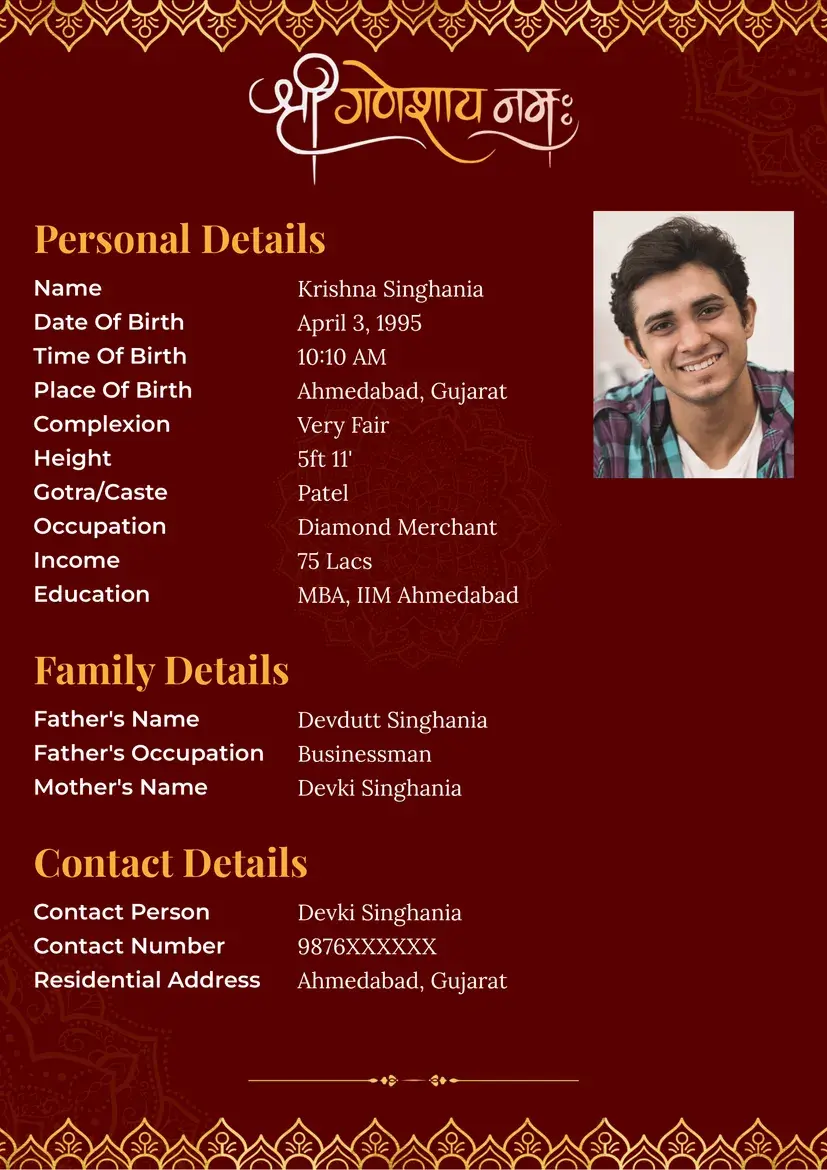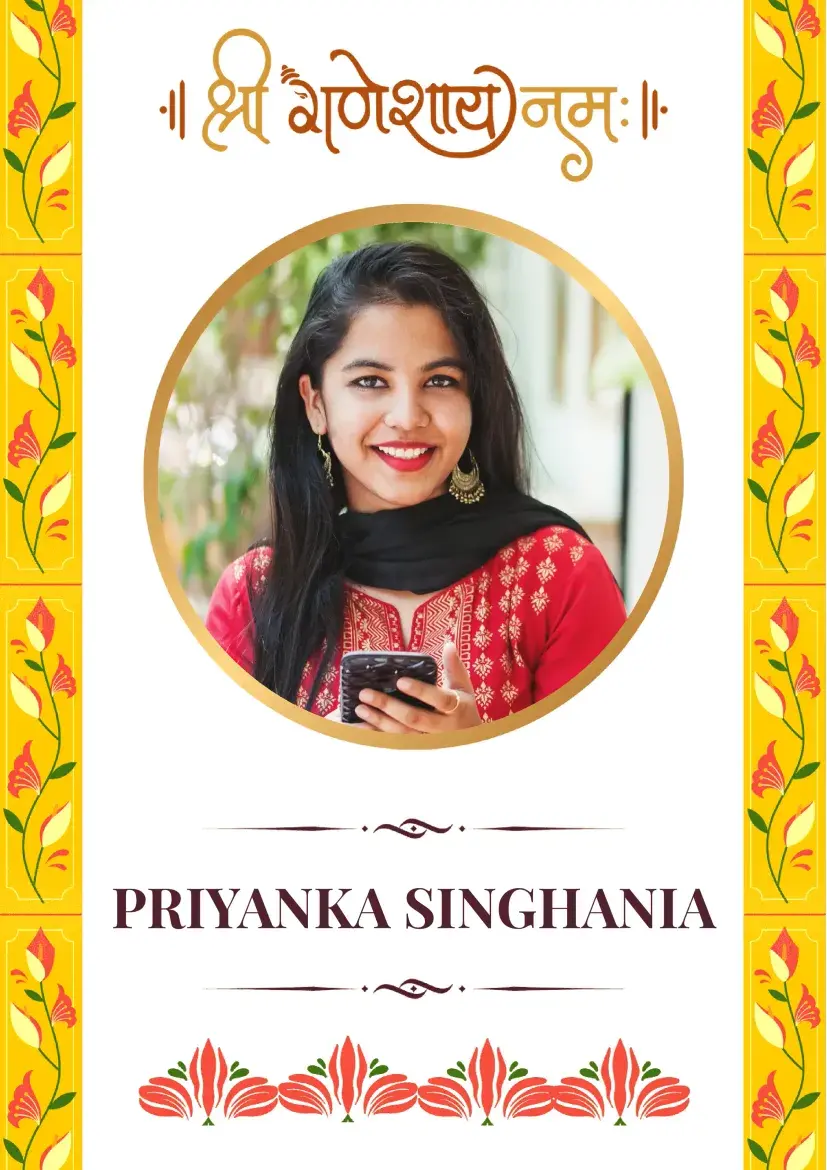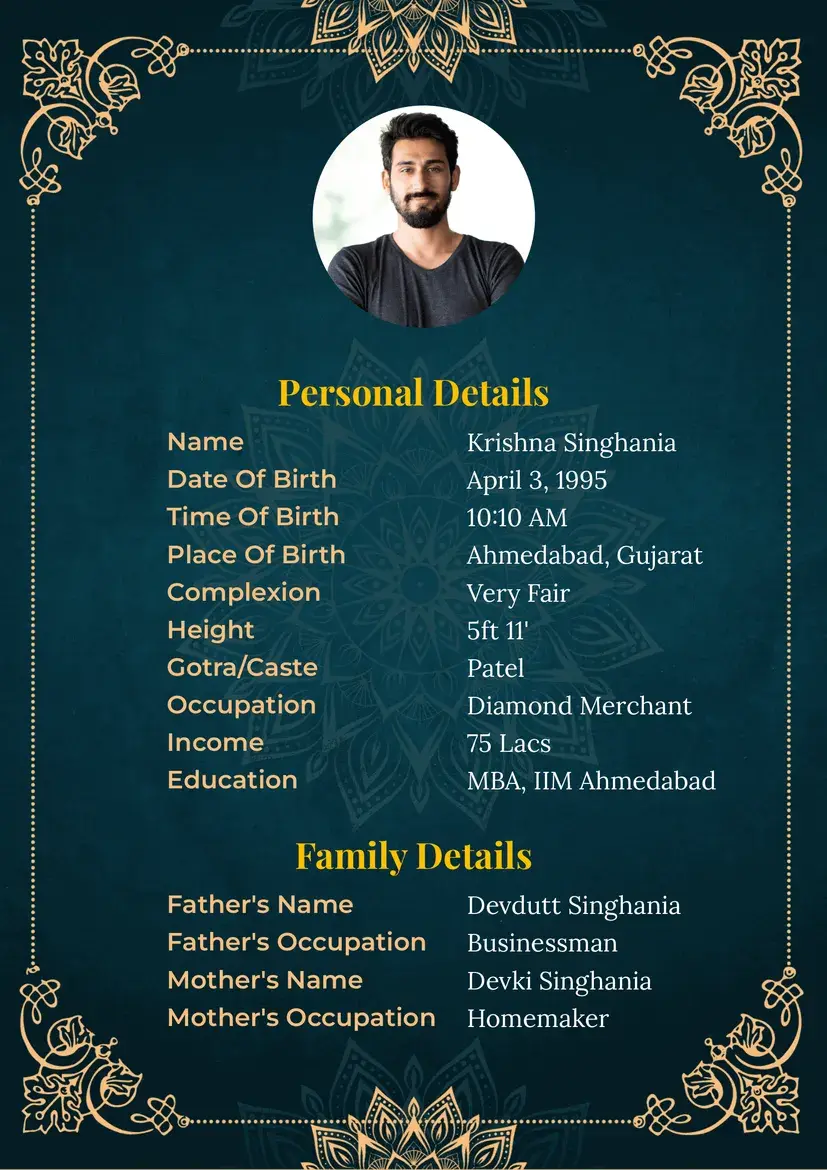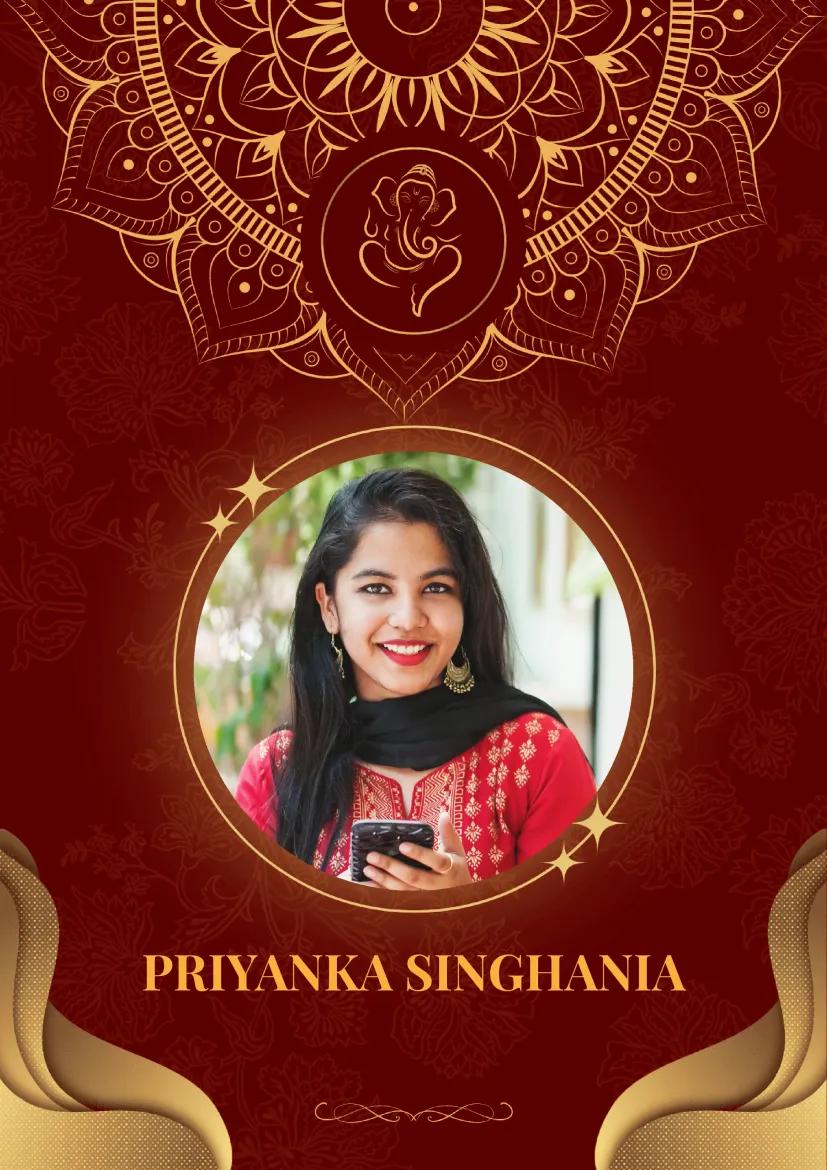
Baniya Matrimony: What to Include in a Marriage Biodata to Impress Traditional Families
Baniya is one of the most widespread Indian communities, dominating primarily the northern part of the country. The Sanskrit word, ‘vanij’ (meaning merchant or trader) is the root of the word ‘Baniya’. This community is largely known for being business-minded and deeply rooted in family traditions. Baniya weddings are immersed in customs, rituals, and cultural values. No matter which part of the world they reside in, Baniyas always return to their roots at the time of marriage. A Baniya matrimony profile is therefore not just a document, but a reflection of tradition, values, and family pride.
Baniya marriages are about honoring unique customs and creating unity between families. A well-prepared Baniya marriage biodata format will connect you with families who share the same cultural roots, values, and aspirations. The right biodata is the key to finding a compatible match that blossoms into a lifelong bond.
But what makes the community so rooted in customs? Why do Baniya families prefer a traditional biodata for marriage over purely modern ones? The answers lie in their history and values.
- Understanding Baniya Matrimony Expectations and What They Value in Marriage
Key Elements to Include in a Baniya Marriage Biodata
- Personal Information
- Family Details
- Photographs
- Educational Background
- Career and Financial Status
- Lifestyle and Personal Preferences
- Cultural and Spiritual Practices
- Optional But Impressive Additions
- Format and Presentation Tips
- Sample Biodatas
- Final Thoughts
FAQ
- What is the importance of gotra in a Baniya marriage biodata?
- Should I include my family’s history in the biodata?
- How detailed should personal and lifestyle information be?
- What photographs are recommended for a Baniya marriage biodata?
- Can I add hobbies and personal preferences to improve my chances?
Understanding Baniya Matrimony Expectations and What They Value in Marriage
Also known as Mahajans, the Baniyas are Vaishyas in the Hindu caste system. They are considered ‘twice-born’ and are known for following religious and social customs strictly. This makes it essential to create a traditional Baniya marriage biodata that reflects their values.
While Baniyas embrace modernity in weddings — from grand celebrations to stylish arrangements — their roots, gotra, and customs remain central. A balanced Baniya matrimony profile must showcase both modern aspirations and traditional respect.
The community’s mercantile history has made professions, wealth, and financial stability important in every Baniya biodata format. At the same time, gotra details are indispensable, as families prefer alliances outside their own gotra to maintain cultural purity.
Some prominent Baniya gotras include:
- Goyal – known for business acumen.
- Gupta – prominent in Indian trade and commerce.
- Khandelwal – respected for their trading legacy.
- Agarwal – highly influential across finance, retail, and manufacturing.
- Maheshwari – rooted in trading and agriculture.
- Oswal – linked with Marwari business traditions.
- Jain – though not exclusively Baniya, many Jain Baniyas are in trade.
Thus, a Baniya marriage biodata is incomplete without gotra, profession, and family roots clearly highlighted.
Key Elements to Include in a Baniya Marriage Biodata
Personal Information
Begin with personal details like name, date of birth, birth time, place of birth, height, and complexion. These are essential for horoscope matching, which remains a traditional step in Baniya matrimony. Do not forget to mention your gotra, religion (Hindu Baniya or Jain Baniya), and mother tongue.
Family Details
Marriage is a union of two families. A strong Baniya matrimony profile always highlights family background. Include parents’ names, occupations, and details about siblings. Adding family history or your family’s role in community events enhances your biodata for marriage and shows your rootedness.
Photographs
Traditional photographs in ethnic attire are highly valued. Men should wear kurta or sherwani, while women may prefer saree or salwar suit. Including a family photograph — during Diwali, Rakshabandhan, or a temple visit — showcases family unity and cultural traditions.
Educational Background
Baniyas are known for excelling in education. Mention your academic qualifications, institutions (IIT, IIM, DU, etc.), and achievements. This strengthens your Baniya biodata format and shows your potential.
Career and Financial Status
Clearly describe your career path, whether you are joining a family business or building your own. For men, highlight business ventures or job stability. For women, mention if you are career-oriented or focused on homemaking while maintaining family balance. Financial clarity is highly respected in Baniya marriage biodata.
Lifestyle and Personal Preferences
Mention dietary habits (vegetarian, Jain food), alcohol preferences, and hobbies. Sharing interests such as travel, fitness, or devotion to religious practices helps in finding a compatible partner.
Cultural and Spiritual Practices
Baniya families value religious practices and cultural festivals. Mention your religious inclination (Vaishnav, Jain, or other), your family guru, and festivals you actively celebrate. This strengthens your Baniya matrimony profile by aligning spiritual values.
Optional But Impressive Additions
To stand out, add a short paragraph about your passions, outlook on life, and qualities you seek in a partner. While traditional, many families appreciate clarity about partner expectations in a Baniya marriage biodata.
Format and Presentation Tips
Your biodata should be clear, concise, and reflect Baniya traditions. A professional format ensures that details are presented neatly. Use a free marriage biodata maker like Marriage Biodata App to create a well-designed profile. With custom Baniya biodata formats, you can highlight what matters most: family values, education, and financial stability.
Sample Biodatas
Here are two sample biodatas for Mahima Agarwal and Rakesh Gupta. Both reflect traditional Baniya values and include all essentials like gotra, family details, and career.
| (the photograph) | Rakesh Gupta D.O.B: Place of birth: Mother tongue: Height: Contact No: |
|---|---|
| Overview Currently working as: Annual income: Highest degree: Dietary choice: Skin: Drinking habits: Personality: | About Myself (A brief paragraph on religious beliefs, family, and hobbies.) |
| Family Father’s name: Father’s occupation: Mother’s name: Mother’s occupation: Living with family: Siblings: | Expectations: (A brief paragraph on what he is looking for in his life partner.) |
| Beliefs Religion: Gotra: Rashi: Manglik: | |
| (the photograph) | Mahima Agarwal Age D.O.B. Caste: Contact details: Ph. no and email Mother tongue: |
|---|---|
| About Myself: (A brief introduction on who she is and what are her values) | Overview Height: Skin: Gotra: Academic background: Career choice: Dietary preference: Hobbies: |
| About Family: Speaking on family values and who all are there in the family (their occupations as well) | Religious Beliefs Possible inclinations |
Final Thoughts
Baniya families preserve cultural practices while embracing progress. Your Baniya marriage biodata should reflect the same — strong family values, rooted traditions, and clarity about your future. With the help of a professional biodata for marriage maker, you can create a profile that impresses families and finds you the right match.
FAQs on Baniya Marriage Biodata
1. What should a Baniya marriage biodata include?
A Baniya biodata format must include personal details, gotra, family background, education, career, financial status, and photographs in traditional attire.
2. Why is gotra important in a Baniya matrimony profile?
Gotra ensures matches are made outside close kinship, which is a key cultural tradition in Baniya marriages. Families carefully check gotra before approving alliances.
3. Can I use a free marriage biodata maker for Baniya biodata?
Yes, platforms like Marriage Biodata App offer free biodata templates designed for Baniya matrimony, making it easy to create a professional profile.
4. How can I make my Baniya matrimony profile stand out?
Add a balance of tradition and personality — mention cultural practices, festivals you celebrate, your gotra, and also your career and hobbies. Choose a professional biodata format for clarity.
5. Which biodata format is best for Baniya marriages?
Multi-page biodatas work well for families that value detailed information, while single-page formats are suitable for concise presentation. Both should reflect Baniya traditions and values clearly.
Marriage Biodata Template Gallery


















